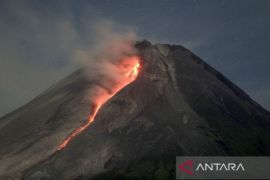"The clean water sources of many people in Sleman and Bantul districts have diminished because the springs are now covered in materials from Mt Merapi eruptions," he said after opening the 10th Asia Pacific Round Table for Sustainable Consumption and Production (APRSP) here on Wednesday.
He said Yogyakarta needed to find new water sources to meet its people`s needs and this had to be done immediately as a reforestation program in the Mt Merapi area could only be carried out after the solution of disputes over land rights.
"If the people have to wait for the implementation of the reforestation program, they will suffer and therefore alternatives water sources must be found soon," he said.
Reforestation was one of the efforts to rehabilitate the environment in the Mt Merapi area but it had been put on hold pending collection of the necessary data and certification of people`s lands. "Collecting and registering data on people`s land ownership limits is a long process," he said.
The dean of the agriculture faculty of the Yogyakarta-based state Gajahmada University, Triwibowo Yuwono meanwhile said the government must start thinking of re-vegetation with regard to water supply in Mount Merapi area.
He said trees are very important for keeping water reserves around the area.
"It indeed takes time for vegetation to grow due to seriousness of the destruction caused by the mountain`s eruptions," he said.
He said a total of 4,000 hectares of natural forests had been destroyed following the eruptions and so it would take long for vegetation to recover.
He said several species that support water reserves have gone because of the eruptions.
He said re-vegetation could be continuously done by grouping collective savannahs consisting of plantation trees, wood forests and taro trees. (*)
Editor: Aditia Maruli Radja
Copyright © ANTARA 2011











